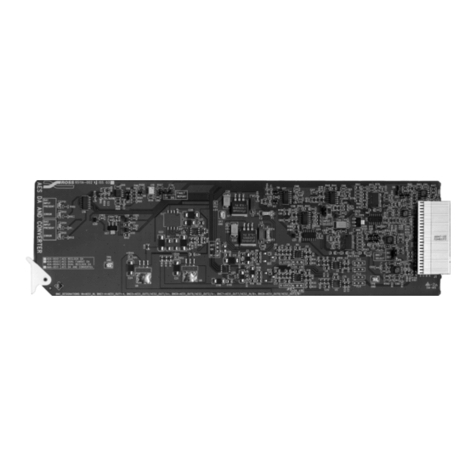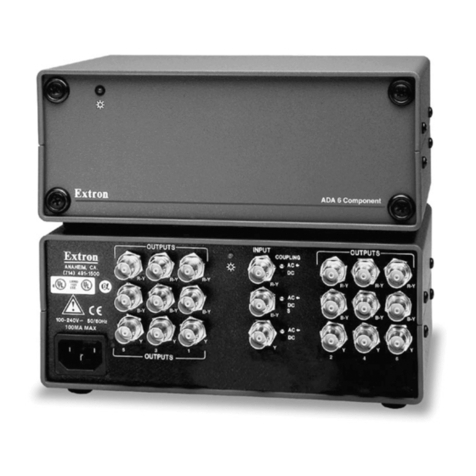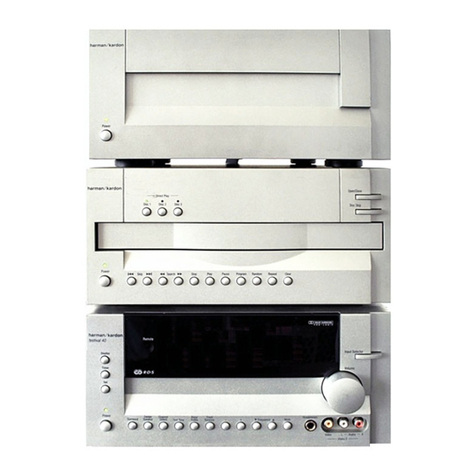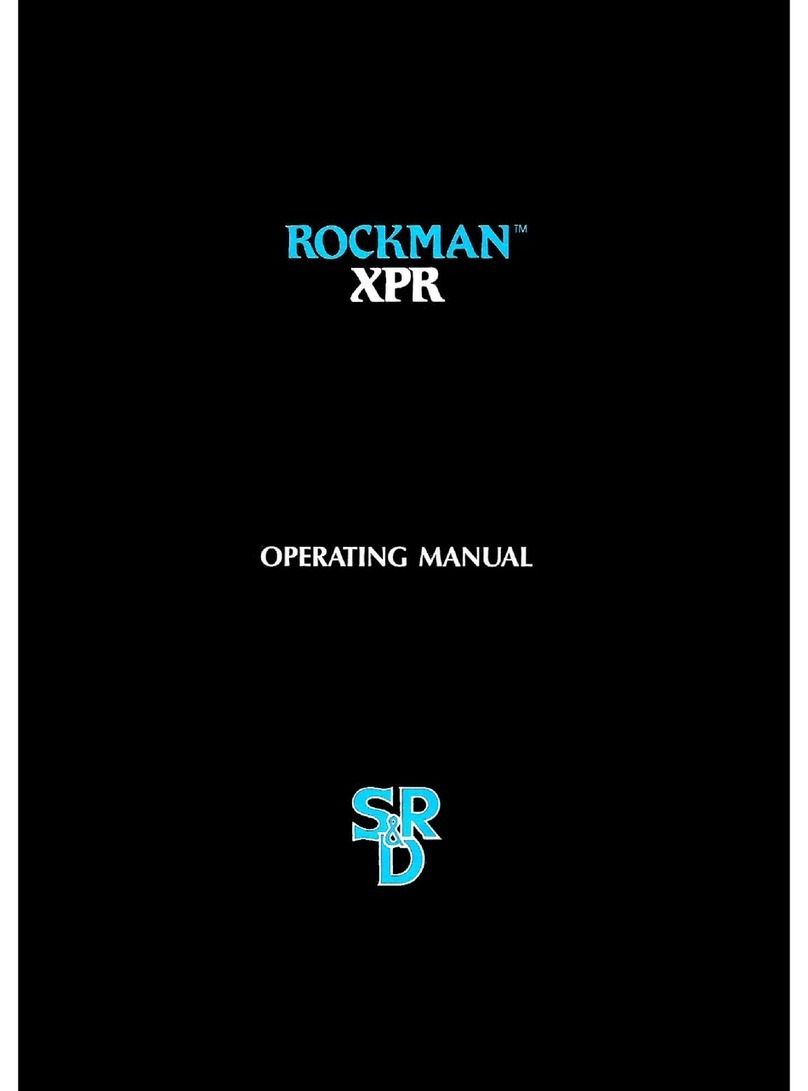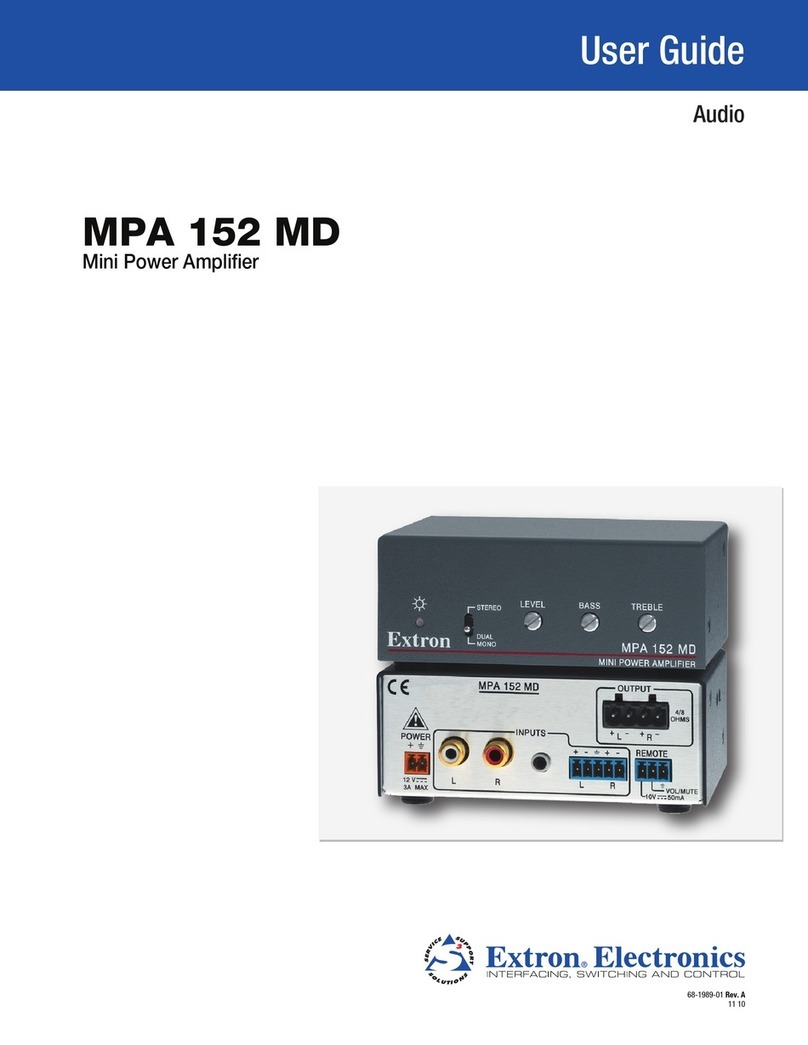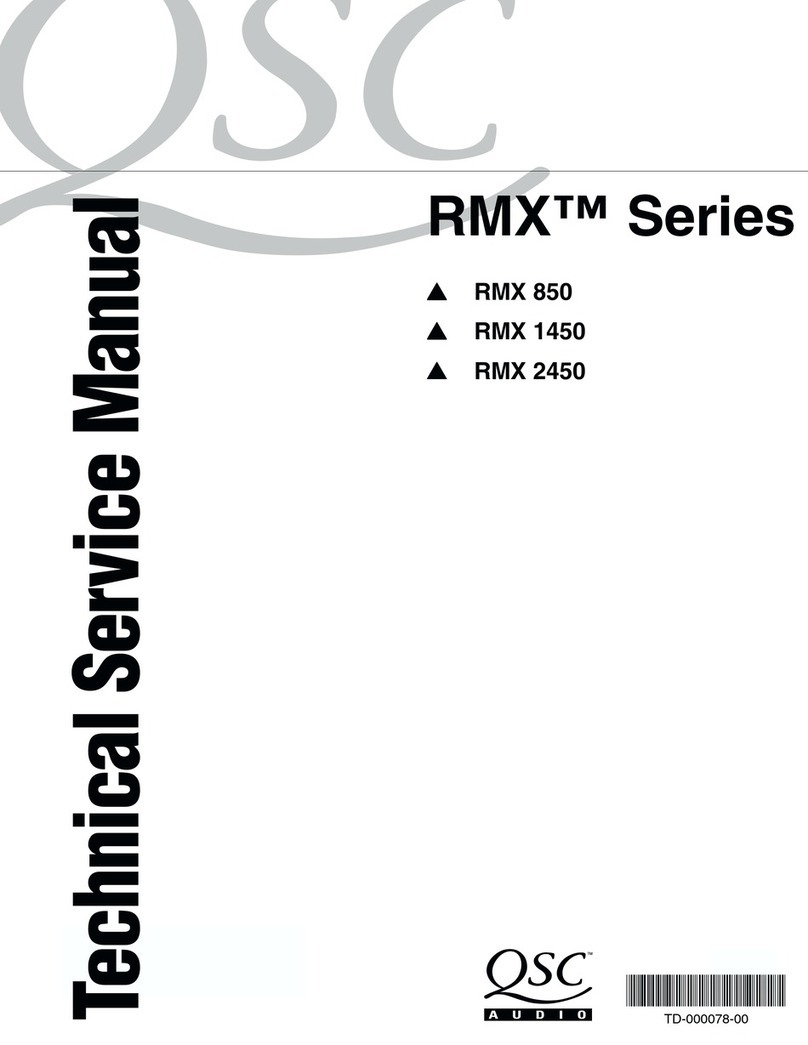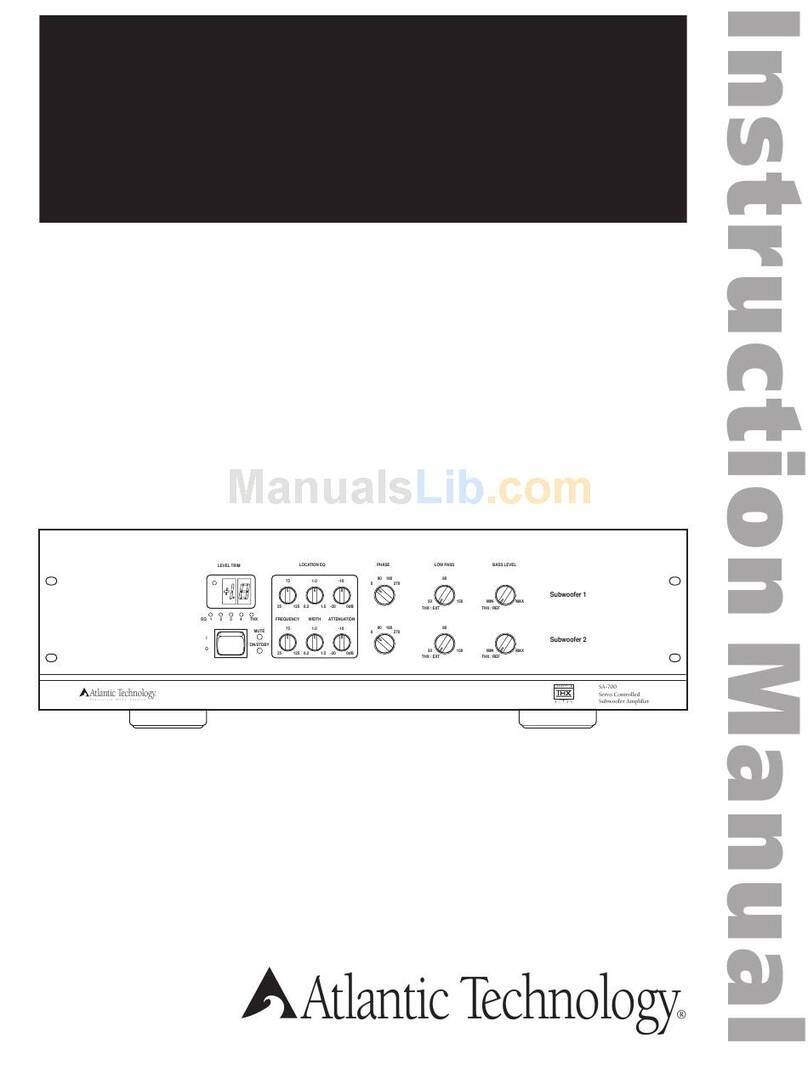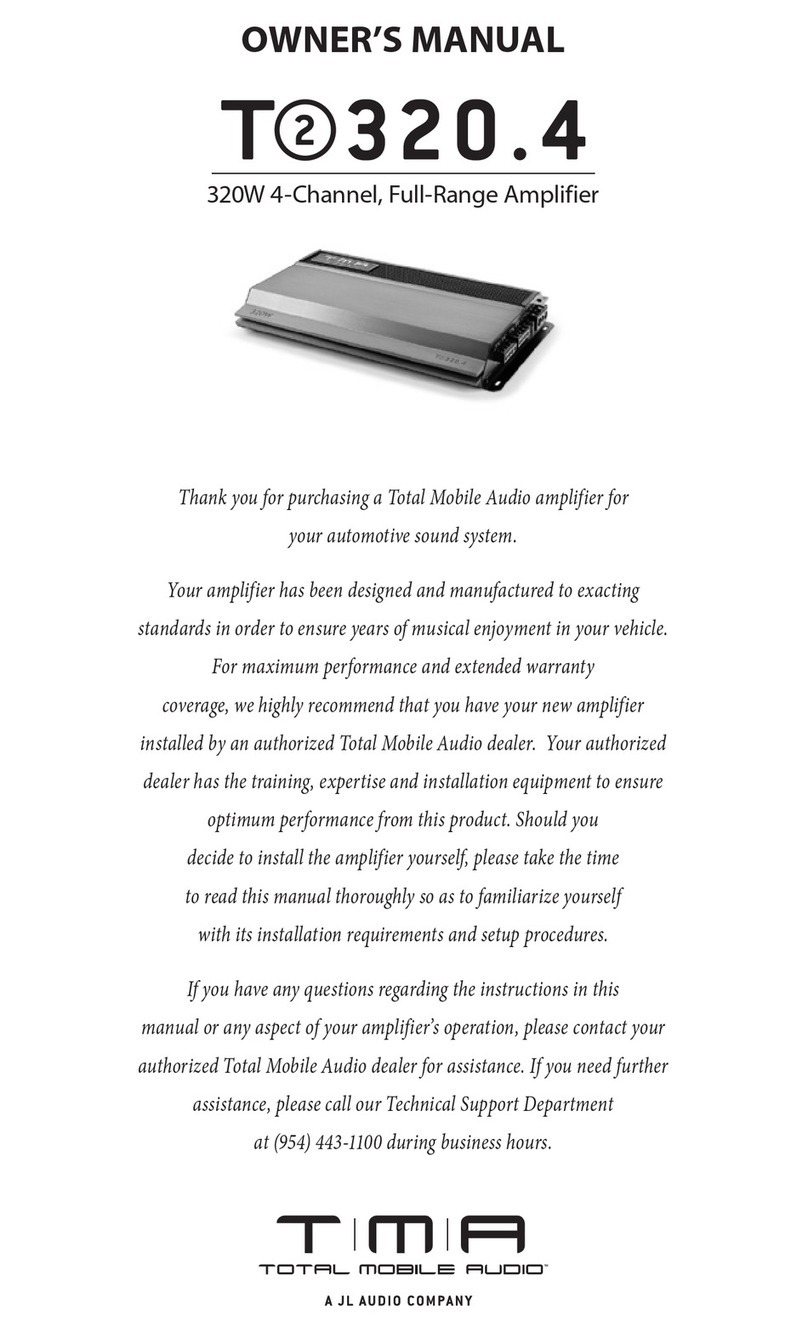Bladelius GRENDEL Parts list manual

BLADELIUS GRENDEL
Multi Channel Amplifier
Instruction & Installation Manual

1
Introduction
Safety Instructions
(standard set of safety instructions “boiler-plate” goes here)
Attention: Installation Personnel
Due to the high-power capability of the Grendel amplifier, the power
supplies are heavy and may require more than one installation person
to rack-mount the amplifier.
NOTE: The amplifier’s weight must always rest on its bottom feet when
placed on to a surface. Never put the amplifier down on its rear panel,
with its front panel facing up. Doing so risks damage to the input/output
connectors.
The amplifier generates a moderate amount of heat, requiring internal
ventilation. Do not permit the air inlet and outlet grilles on the top,
bottom, side, and back cover to be obstructed by papers or other
materials.
NOTE: To prevent a fire or shock hazard, do not permit liquid or
moisture to enter the amplifier. If liquid is accidentally spilled on it,
immediately shut off the power and unplug the AC Mains cable from the
wall outlet.
Do not open the amplifier or attempt to modify or repair it yourself.
Refer all servicing to a qualified technician.
Specificationsordesignsubjecttochangewithoutnotice.Allspecificationsarethoseineffectattimeofprinting.
„
2003,BladeliusDesignGroup

2
Table of Contents
Introduction
Safety Instructions
Table of Contents
I Description
II Operation
III Installation
(Physical)
Rack Mount
Shelf Mount
(Electrical)
Speaker Hook-up
IV Troubleshooting
V Specifications
Description
Bladelius Grendel is a multi-channel amplifier with a modular structure. The
amplifier can be configured with several different combinations of “mono” or
“stereo” performance modules.
There are five available locations (slots) for power modules in your Grendel
amplifier. It’s possible for Grendel to accommodate any combination from
1 to 10 channels. The mono module produces 400 watts. The stereo module
provides 2 channels {left/right}, rated at 140 watts /channel. The most
common configuration is 5 mono channels yielding a 5 times 400 watt
amplifier.

3
If your Grendel amplifier is configured with less than 5 power modules the
unused locations (slots) are covered with cover plates. Additional power
modules can always be added or changed to reconfigure your Grendel to
meet your current requirements.
When viewing Grendel from the front, we recommend that you connect your
front audio system channels beginning at the far left of the amplifier.
Operation
Front-Panel Controls and Indicators:
1. POWER SWITCH
2. Five Status LEDs
1. The front-panel momentary-contact switch will power on, and place the
Grendel into standby. Once you turn on the amplifier via the front-panel
switch, only the front-panel switch can return the amplifier to standby state.
2. The STATUS LEDs flash blue when the amplifier goes into protection
mode. For example, in the unlikely event of overheating, shorting, or DC-
input, protection mode would be activated and the LED will flash for the power
module in fault. The amplifier will stay in this state until the cause of the fault
has been corrected. Turn off the amplifier and check all connections (Please
refer to the section about cooling). Once you have removed the cause of the
fault, turn on the amplifier and it should return to normal operation. If the
Grendel stays in protection mode you might need to replace a fuse or have
the amplifier checked by a qualified service technician. If you have any
questions about the operation of the amplifier we recommend that you consult
your dealer.
Rear-Panel Controls and Connections:
Amplifier modules
1. SPEAKERS Terminal Posts
2. INPUT SWITCH BALANCED/UNBALANCED
3. CHANNEL INPUT UNBALANCED
4. CHANNEL INPUT BALANCED
Chassis
5. COM-port (communication with other Bladelius products)
6. Indicator LEDs
7. RS 232 port (for control and software updates)

4
8. Trigger 1
9. Trigger 2
10. Main power switch
11. AC Line connector and Fuse Holder
The Grendel is equipped with 2 trigger jacks (3.5mm monotype miniature
phone jack). The TRIGGER allows you to control other products with a
sensor, by the Grendel amplifier. The centre pin of each jack is the signal-
sense and signal-drive. We recommend that you use a good quality cable
with shielding when attaching your trigger cables so as to prevent false
triggering of the amplifier due to electro-magnetic interference from nearby
electronic equipment.
The TRIGGER allows you to have an external signal turn on the Grendel
amplifier from standby. This signal must be a continuous signal in order to
keep the amplifier in the on state (5V or 12V signal). Once you remove the
signal the amplifier will return to standby. The TRIGGER can be used with
both 5 and 12 volt trigger systems for maximum versatility.
NOTES:
•Check the specifications of the trigger input terminal on the other components to
ensure that they are compatible with the Grendel amplifiers.
•All
continuous

5
Before connecting the AC-power cord to a live wall socket insure that all
inputs/outputs are connected first. Always disconnect the AC-power cord from
the live wall socket first, before disconnecting any cable from the amplifier. If
you must use an extension cord, select a heavy-duty cord of the type used for
large electrical appliances, such as an air conditioner AC-extension cord (16
AWG). We strongly recommend that you do not connect the amplifier’s AC-
power cord to the accessory AC outlets on a preamplifier. Such convenience
outlets are not designed to supply the high-power levels that the Grendel
amplifier requires.
Fuse holder. There is a fuse holder near the AC-power cord. In the unlikely
event a fuse may need to be replaced, unplug the power cord from the wall.
Then remove all connections from the amplifier. Only replace the fuse with
the same type, size, and specification. Refer to “SPECIFICATIONS” at the
back of this instruction manual for the correct number, type and size of the
replacement fuse.
CAUTION: Failure to replace the fuse with the correct number, brand
name, and type listed in the “FUSE REPLACEMENT – PLEASE NOTE
CAREFULLY” chart, found in the back of this instruction manual under
section “Fuse Replacement Chart” will eventually lead to either another
blown fuse or amplifier damage.
Installation
(Physical)
Rack-Mount Installation:
Since the Grendel amplifier is quite heavy, we recommend that you mount the
Grendel amplifier as close to the bottom of a rack as possible to promote a
stable Rack-Mount installation. The Grendel amplifier needs special
consideration when rack-mounting to allow sufficient ventilation space all
around the amplifier. Thus we recommend one should allow at least a one-
rack-space below and above the amplifier as clearance, and that you allow
more than 2 to 3 inches (5 to 7.5 cm) of space on all six sides of the Grendel
amplifier.
Cooling
Please note that the Grendel amplifier is provided with cooling fans for forced
ventilation. Due to the amplifier being equipped with a switched power supply
with high efficiency the fans will only be activated under very extreme
conditions (or mounted in a confined space).
Installation
(Physical)
Shelf-Mount Installation:

6
For shelf-mount installations of the Grendel amplifier, we recommend that you
do not place equipment on top of the amplifier. Leave at least 2 to 3 inches (5
to 7.5 cm) on all sides of the amplifier so that the Grendel amplifier achieves
adequate airflow. We strongly recommend that you do not block the side, top,
back and front, airflow vents.
Since its power transformer generates a significant magnetic hum field, a
turntable (especially one with a magnetic pick-up cartridge) or a television
should not be located adjacent to, directly above, or below the amplifier.
Installation
(Electrical)
Speaker Hook-up:
This amplifier is equipped with special high-current, binding-post speaker
terminals to handle the highest peak-power levels that may occur with low-
impedance speakers. At moments when the amplifier is producing maximum
power, voltages of over 100V may be present on the speaker terminals, so
plastic covers protect the terminals. To connect loudspeaker cables, first
switch off the amplifier’s power by disconnecting the AC-power cord from the
wall outlet.
Connect the wires from one of your speakers to the “RED” and “WHITE“
terminals on the rear panel of the Grendel amplifier. In each channel, the red
terminal is the positive “+” output, and the black terminal is the negative “-“ or
“ground” terminal.
Use heavy-duty, high quality speaker cable. Bare wires can be connected
directly to the binding-post terminals. For a longer lasting and more corrosion
resistant connection, you may install speaker cables with gold-plated
connectors (spade or banana plugs), or you can install such connectors on
the wires yourself. Connections to each binding post may be made in the
three ways described below.
1. Banana plugs: A banana plug is a metal shaft that is crimped or soldered
onto the end of a wire. The threaded shaft of each binding post contains an
opening that accepts pin connectors up to 4mm in diameter. Insert the
banana plug in the hole until it is tight.
2. Spade lugs: Unscrew the plastic bushing, insert the U-shaped spade lug
into the oblong gap and tighten the bushing down on it.
3. Bare wires: Separate the two conductors of the cord (if they are supplied as
a pair), and strip off a half-inch (1cm) of insulation from each. In each
conductor, twist together the exposed wire strands. Unscrew the plastic
bushings for “+” and “-“, insert the bare wire through the hole in the metal
shaft, and tighten the plastic bushing until it grasps the wire securely (see
Figure 2). Check to be sure that no loose strand of wire is touching the
chassis or an adjacent terminal. Re-tighten the bushing after a week or so
to make sure that any play that may have developed is eliminated.

7
PHASING:
Stereo speakers must operate “in phase” with each other to produce a
focused stereo blend and to reinforce rather than cancel each other’s output
at low frequencies. An in-phase connection is assured if the red (positive)
terminal on the amplifier is connected to the red (positive) terminal on the
loudspeaker in each channel. If your speakers are easily moved, their
phasing can easily be checked. Make the connections to both speakers,
place the speakers face-to-face only a few inches apart, play some music,
and listen. Then swap the connection of the two wires at the back of ONE of
the speakers, and listen again. The connection that produces the fullest, most
extended bass output is the correct one. Once you have determined the
correct phasing, connect the wires securely to the speaker terminals, being
careful not to leave any loose strands of wire that might touch the wrong
terminal and create a partial short-circuit, then move the speakers to their
intended locations.
If the speakers cannot easily be placed face-to-face, then phasing must rely
on the “polarity” of the connecting wires. The speaker terminals on the
amplifier are identified as red “+” and black “-“ in each channel. The terminals
at the rear of the speakers are also marked for polarity, either via red and
black connectors or by labels: “+”, “1”, or “8 ohms” for positive, “-”, “0”, or “G”
for negative. The red “+” terminal on the amplifier should be connected to the
red (positive) terminal of the speaker in each channel. To facilitate this, the
two conductors comprising the speaker wire in each channel are different,
either in the colour of the wire itself (copper vs. silver) or in the presence of a
small ridge or rib-pattern on the insulation of one conductor. Use this pattern
to establish consistent wiring to both speakers of a stereo pair. Thus if you
connect the copper-coloured wire (or ribbed insulation) to the “+” amplifier
terminal in the Left channel, do the same in the Right channel. At the other
end of the wire, if you connect the copper-coloured wire (or the ribbed
insulation) to the red (positive) terminal on the left channel speaker, do the
same at the right channel speaker.
NOTE:
Safety organizations recommend that the speaker terminals of a very
powerful amplifier should be covered. Potentially dangerous voltages are
present on these terminals when the amplifier is producing maximum power.
For your protection and in order to

8
•The Protection mode is engaged.
•External fuse blown.
•Switch amplifier off. Make sure
ventilation slots on top, side, and
back of the amplifier are not blocked.
After amplifier has cooled down,
switch the amplifier on.
•Replace fuse.
•Consult dealer/installer.
No sound in one channel.
•Speaker not properly connected or
damaged.
•Input cable pulled loose or making
poor contact at input socket.
•Short-circuit or broken wire in a
defective patch or speaker cable.
•Check all connections both at the
speakers and at the amplifier.
•Check leads and signal cables.
•Switch the amplifier to stand-by
mode, check and replace cables if
necessary.
Weak bass/ poor stereo
image.
•Speakers wired out-of-phase.
•Reverse connections at the back of
the suspect amplifier output.
•Check connections to all speakers in
the affected zone/room.
Table of contents
Other Bladelius Amplifier manuals

